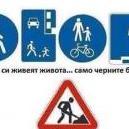Кога и откъде навлизат индоевропейците в Европа - мащабно изследване на антично ДНК (65 скелета от Ямна, Самара и Corded Ware)
-
Последна активност
-
Светът иска да регулира изкуствения интелект, но не знае как 1 2 3 4 7
От Р. Теодосиев, in Изкуствен Интелект
- 168 мнения
- 10844 прегледa
-
- 2181 мнения
- 181784 прегледa
-
- 9 мнения
- 133 прегледa
-
- 7 мнения
- 120 прегледa
-
- 751 мнения
- 145863 прегледa
-
-
Последно разглеждащи 0 Потребители
- No registered users viewing this page.



Препръчано мнение
Напиши мнение
Може да публикувате сега и да се регистрирате по-късно. Ако вече имате акаунт, влезте от ТУК , за да публикувате.